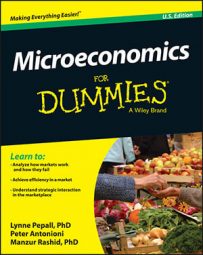If you've ever been unable to consume a tenth bar of chocolate, you've experienced the phenomenon of diminishing marginal utility, meaning that as you consume increasing amounts of the same thing, the utility gained from each additional amount is smaller, as you add more and more.
At some point, the marginal utility can fall to zero and you desire no more of the good — it can even turn negative afterwards (yes, it's true, you can eat so much chocolate that eating any more causes displeasure rather than pleasure).
In general, economists assume that, given the choice, people prefer more goods to less. This assumption holds, up to a limit, because at some point people get satiated by their consumption of a good and don't want to consume any more of it.
However — and this is quite a big however — up to that point, the more-over-less assumption operates. Begin from the assumption that more is better.
Once you get the idea of what utility is to the economist, you can start putting together the building blocks that economists use for modelling.

